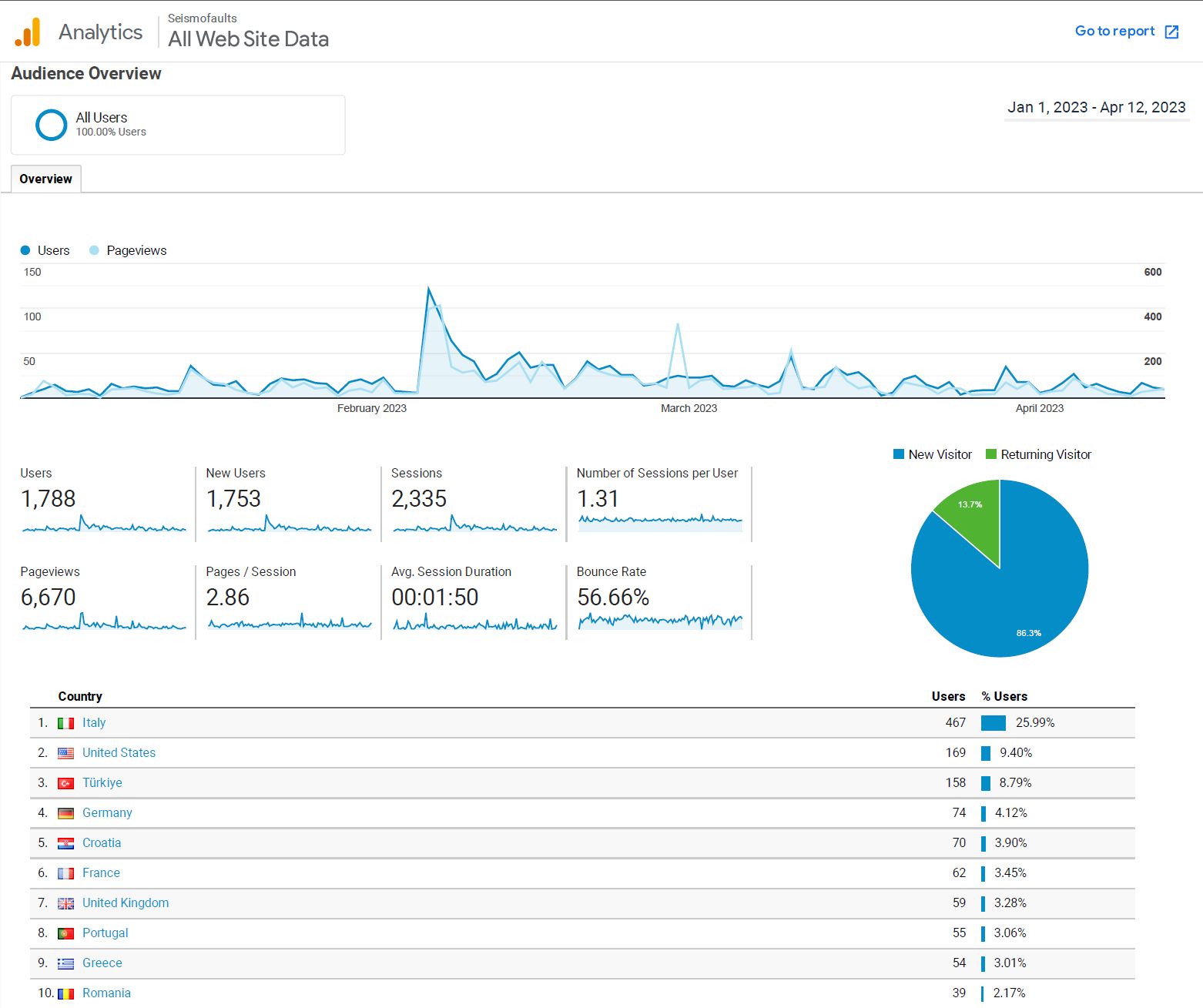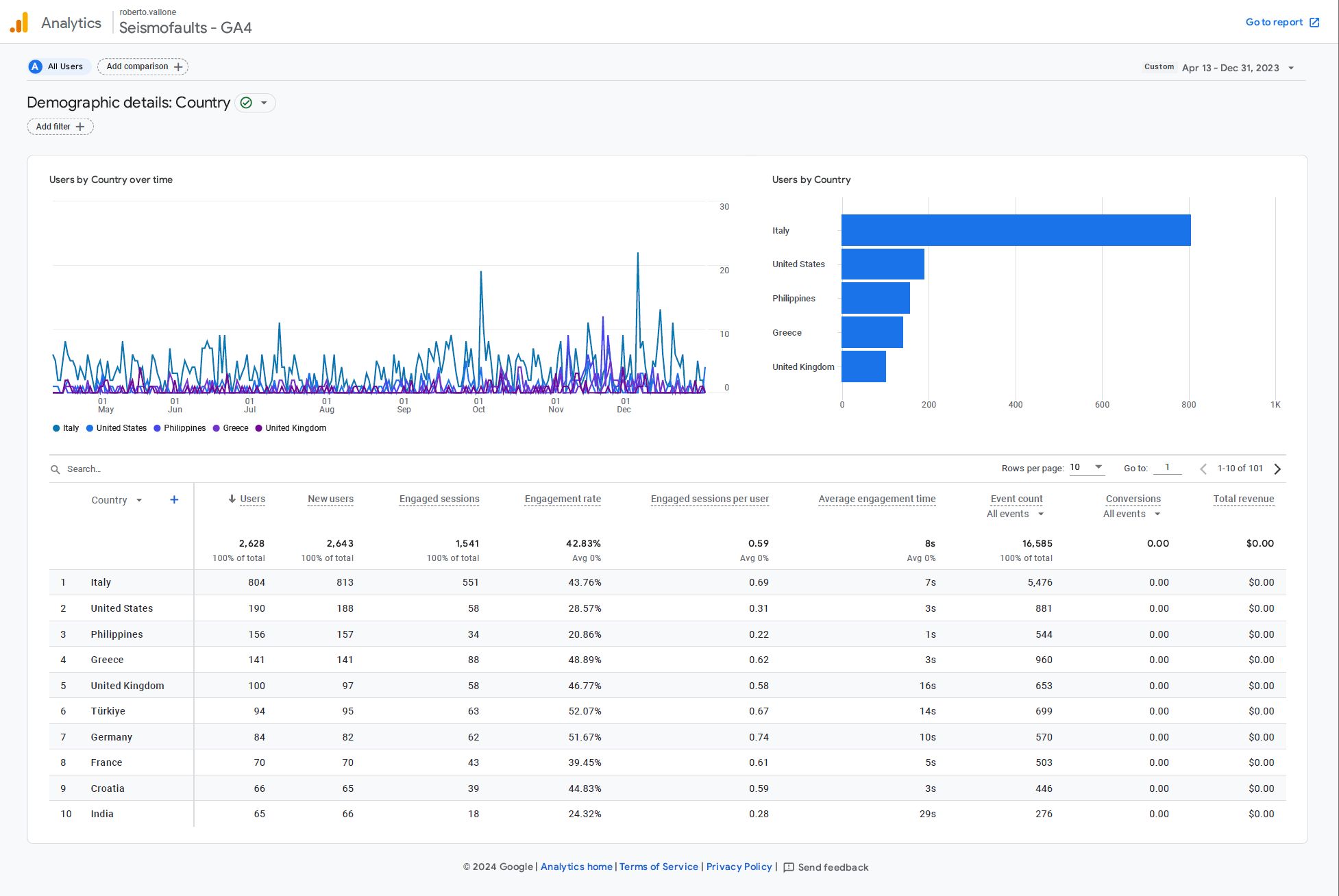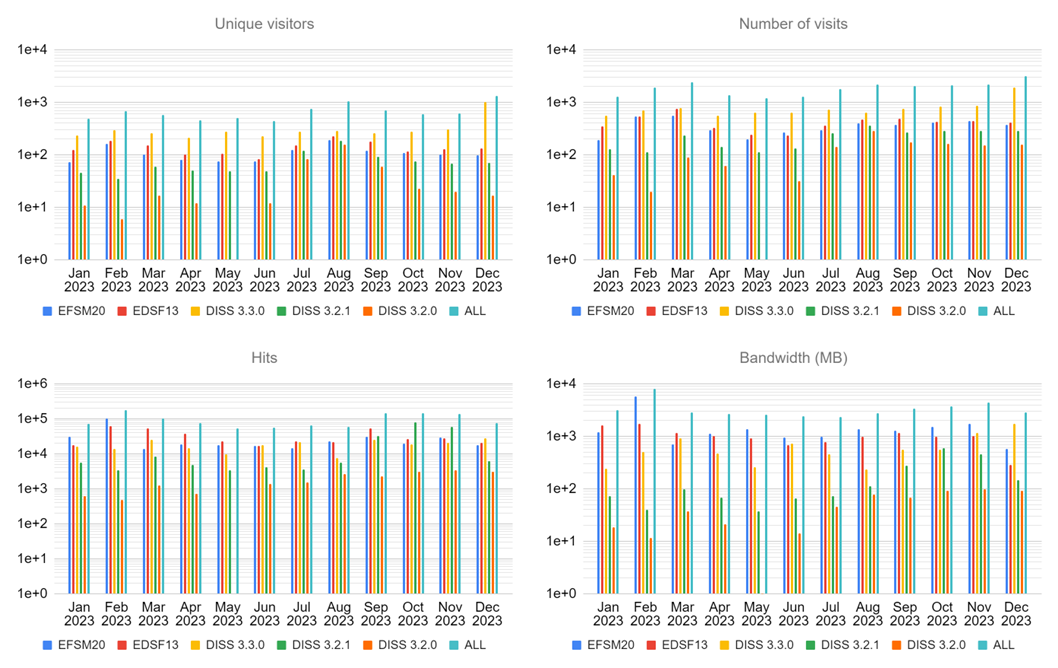Report on the 2023 activity of the EDSF installation
The European Databases of Seismogenic Faults (EDSF) installation operates under the auspices of the EPOS TCS-Seismology work program, particularly those of the EFEHR Consortium, and considers the principles expressed by the EPOS Data Policy. EDSF offers services that distribute data about seismogenic faulting proposed by the scientific community or solicited to the scientific community or stemming from project partnerships that involved the use or development of the EDSF installation itself.
Portal content updates
Datasets
- EFSM20: added color-scale SLD files for download, documentation links to the dataset web pages, and web services to QQuake.
- DISS: fixed link redirects to the new DISS user interface, added new WFS services for the CSS contour lines and Area of Relevance and new WMS service for the Area of Relevance to the “current” and 3.3.0 versions.
Documentation
- Updated the EDSF installation and EFSM20 dataset Data Management Plans and added the portal activity report 2023 (this document).
- Added links to the QQuake version 1.7 documentation and user guide.
- Added a PDF viewer for the extended report “Technical documentation of SEISMOFAULTS.EU: the IT infrastructure employed by the European Databases of Seismogenic Faults (EDSF) installation” as published on Rapporti Tecnici INGV.
- Added new items in the public Zotero Group Library.
Portal access statistics
Access to the portal webpages is monitored via Google Analytics. As of April 13th, the portal data processing switched from Universal Analytics to Google Analytics 4 (GA4). The two reports below show the usage statistics before and after this switch.


Portfolio of distributed services
The portal distributes 42 OGC WFS layers and 56 OGC WMS layers of three different datasets, including multiple versions, as listed in the table below.
| Dataset | Version | Date of publication (MM/YYYY) | OGC WFS layers | OGC WMS layers | ICS-C GUI | DMP |
|---|---|---|---|---|---|---|
| European Database of Seismogenic Faults 2013 (EDSF13) | 2013 | 03/2013 | 4 | 8 | Yes | Yes |
| Database of Individual Seismogenic Sources (DISS) | 3.2.0 | 06/2015 | 6 | 10 | No | Yes |
| Database of Individual Seismogenic Sources (DISS) | 3.2.1 | 04/2018 | 6 | 10 | No | Yes |
| Database of Individual Seismogenic Sources (DISS) | 3.3.0 | 12/2021 | 8 | 11 | No | Yes |
| Database of Individual Seismogenic Sources (DISS) | Current ≡ 3.3.0 | 12/2021 | 8 | 11 | No | Yes |
| European Fault-Source Model 2020 (EFSM20) | 2020 | 10/2022 | 10 | 6 | Yes | Yes |
Access statistics of distributed services
Access to the distributed web services is monitored using AWStats software. Notice that, differently from web pages, in the case of web services, the term "visitor" refers to a user that performs a query to the dataset. Likewise, the terms "visit" and "hit" must be intended to be equivalent to queries. The term "bandwidth" is the total number of bytes (images and files downloaded) transferred by queries.

As of December 4th, the DISS Web Feature Services of the version "current" started being used by the new DISS web user interface. Each DISS version includes an access quota to the “current” concurrently active version, presently DISS version 3.3.0.

